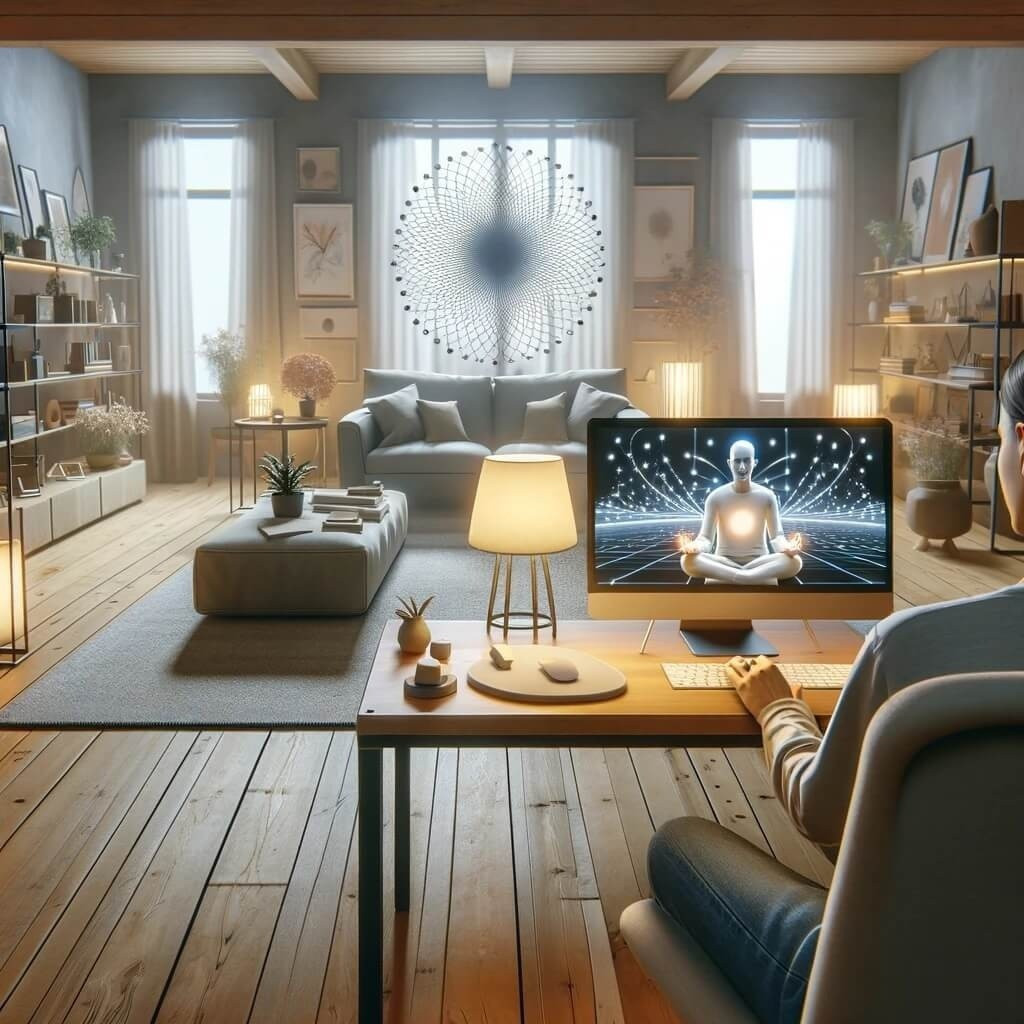VIRTUAL EMDR BLOG
Accelerated Resolution Therapy (ART) vs. EMDR
Find out the main differences between Accelerated Resolution Therapy (ART) and Eye Movement Desensitization and Reprocessing (EMDR)
30 Jan 2024
![]() Tag:
Tag:

In the ever-evolving landscape of mental health treatment, innovative therapies play a pivotal role in addressing the diverse needs of individuals grappling with psychological challenges.
As conventional approaches continue to evolve, two notable modalities have gained prominence – Accelerated Resolution Therapy (ART) and Eye Movement Desensitization and Reprocessing (EMDR). These therapies stand at the forefront, offering novel avenues for healing and recovery.
ART and EMDR are cutting-edge therapeutic techniques designed to alleviate the impact of trauma and mental health issues. ART, characterized by its brief and targeted sessions, employs a combination of rhythmic eye movements and visualization to facilitate accelerated emotional resolution.
On the other hand, EMDR harnesses bilateral stimulation, often through eye movements, to help individuals process distressing memories and emotions. This article aims to delve into a comparative analysis of ART and EMDR, with a specific focus on their applicability in the realm of virtual therapy.
As the world embraces digital solutions for mental health support, understanding the nuances of these innovative therapies in a virtual context becomes increasingly crucial. Join us on this exploration as we navigate the unique features and effectiveness of ART and EMDR in the evolving landscape of mental health care.
Understanding Accelerated Resolution Therapy (ART)
Accelerated Resolution Therapy (ART) is a groundbreaking therapeutic approach that originated in the early 2000s and was developed by Dr. Laney Rosenzweig. Rooted in established psychological principles, ART combines elements of traditional psychotherapy with innovative techniques to expedite the resolution of emotional distress.
In a recent study, ART stood out as a brief, safe, and effective treatment for addressing clinically significant comorbid symptoms. The key principles of ART revolve around the idea that traumatic memories are stored in the brain and can be effectively reprocessed through rapid eye movements.
In a typical ART session, the therapist guides the client through a structured process that includes visualization and eye movements, fostering a desensitization to distressing memories.
This unique combination of techniques enables individuals to process and integrate challenging experiences more rapidly than traditional therapy methods. ART has demonstrated remarkable efficacy in addressing a spectrum of issues, including trauma, anxiety, depression, phobias, and grief.
Its versatility extends to diverse populations, making it applicable to both children and adults. The therapy is particularly renowned for its ability to yield positive outcomes in a relatively short duration, often requiring fewer sessions compared to conventional therapeutic approaches.
While the benefits of ART are evident in its efficiency and broad applicability, it is essential to acknowledge its limitations. Some individuals may find the intensity of the process challenging, and not everyone responds uniformly to the treatment.
Additionally, as with any therapeutic modality, ART may not be suitable for every mental health concern, necessitating careful consideration of individual needs and circumstances.
Accelerated Resolution Therapy stands as a dynamic and effective intervention, utilizing innovative techniques to address a wide array of mental health issues. Its swift and targeted approach, coupled with a recognition of its limitations, positions ART as a valuable tool in the evolving landscape of psychological care.
What is the Difference Between ART and EMDR?
In exploring the dynamic landscape of trauma-focused therapies, understanding the nuanced differences between Accelerated Resolution Therapy (ART) and Eye Movement Desensitization and Reprocessing (EMDR) becomes imperative.
While both modalities share overarching goals and outcomes, their methodologies, session structures, and techniques diverge significantly. ART and EMDR converge on common goals, seeking to alleviate the distress associated with traumatic memories and promote emotional resolution.
Both aim to facilitate adaptive processing of traumatic experiences, ultimately diminishing the emotional charge attached to those memories.
Methodology Differences
However, the methodologies employed by ART and EMDR showcase distinct approaches. ART distinguishes itself through its streamlined and rapid resolution techniques, often requiring fewer sessions than EMDR.
In ART, therapists guide clients through a structured process that includes rhythmic eye movements and visualization, fostering accelerated emotional resolution.
EMDR, in contrast, involves bilateral stimulation through eye movements, taps, or sounds, and follows a more extended and phased protocol that includes detailed history-taking and specific desensitization phases.
ART vs EMDR Sessions
A session typically maintains a briefer duration, reflecting its emphasis on expeditious resolution. EMDR sessions, on the other hand, are often longer, incorporating more comprehensive preparatory and debriefing phases.
Effectiveness in treating various types of trauma and mental health issues is a crucial aspect of the comparison. Both ART and EMDR have demonstrated efficacy across a range of conditions, including PTSD, anxiety, depression, and phobias.
The choice between the two may hinge on individual preferences, the nature of the trauma, and the desired pace of resolution. ART's swifter approach may appeal to those seeking rapid results, while EMDR's phased structure may suit individuals who prefer a more extended and systematic therapeutic journey.
In essence, while ART and EMDR share common ground in their overarching objectives, the differences in methodologies, session structures, and approaches to trauma processing offer individuals and therapists distinct choices in tailoring treatment to specific needs and preferences.
As the field of trauma therapy continues to evolve, the comparative analysis of ART and EMDR provides valuable insights into the diverse options available for those seeking effective and personalized interventions.
Choosing Between ART and EMDR
Choosing between ART and EMDR requires careful consideration of several factors to ensure a tailored and effective therapeutic experience. Individualized needs, the nature of trauma, and personal comfort with each method are pivotal in making an informed decision. Firstly, consider the specific factors influencing your choice.
The accelerated nature of ART may appeal to those seeking a rapid resolution, while individuals who prefer a more structured and phased approach might find EMDR to be a better fit. Understanding the pace at which you are comfortable processing trauma is crucial.
The Nature Of the Trauma
Some individuals may resonate more with the techniques employed in ART, while others may find the extended phases and bilateral stimulation in EMDR to be better suited to their needs. It's essential to align the chosen therapy with the unique characteristics of the traumatic experiences being addressed.
Personal Comfort
Personal comfort plays a significant role. Discussing preferences and concerns with a qualified therapist can offer valuable insights. The therapeutic alliance and a sense of trust with the chosen modality contribute to the overall efficacy of the treatment.
Feasibility
Both ART and EMDR have shown adaptability to virtual platforms, allowing individuals to access these therapies from the comfort of their own spaces. Understanding the technology requirements and ensuring a conducive environment for virtual sessions can influence the choice between the two.
In conclusion, the decision between ART and EMDR hinges on a thoughtful evaluation of individual needs, the nature of trauma, personal comfort, and the suitability for remote sessions. By prioritizing these factors, individuals can make an informed choice that aligns with their preferences and facilitates a therapeutic journey conducive to healing and resolution.
Conclusion
ART and EMDR emerge as potent tools for trauma-focused therapy. ART's agility complements EMDR's structured approach, offering therapeutic choices based on individual preferences, trauma characteristics, and comfort levels. If you are considering virtual EMDR, you can do so by signing up for a 3-day trial here: https://www.virtualemdr.com/register
Be the first to comment.









View Comments